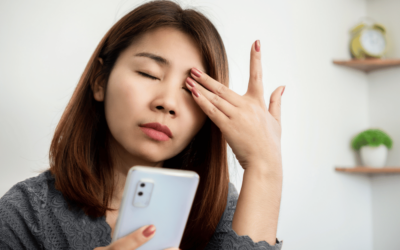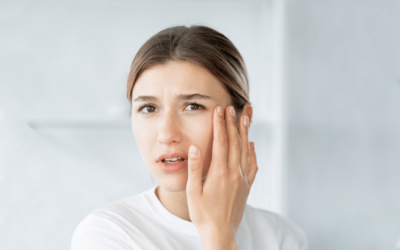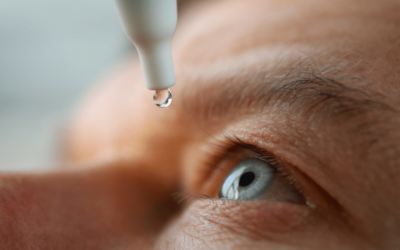As we age, we start to notice changes in our health and well-being. One common issue that many people face is dry eye disease. This condition can be uncomfortable and even painful. In this blog, we will explore the connection between aging and dry eyes and how you can manage uncomfortable symptoms.
Aging and dry eyes
Dry eye disease occurs when the eyes don’t produce enough tears or when the tears evaporate too quickly. Aging is a significant risk factor for developing dry eyes due to various age-related changes.
Decreased tear production
As we get older, tear production tends to decrease. The lacrimal glands responsible for producing tears become less efficient, leading to insufficient tear quantity to keep the eyes properly lubricated.
Meibomian gland dysfunction (MGD)
MGD is a common condition associated with dry eye disease. The meibomian glands, which secrete oils to help stabilize the tear film, can become blocked or dysfunctional with age, leading to inadequate tear quality and increased tear evaporation.
Hormonal changes
Hormonal changes, particularly in women during menopause, can contribute to dry eye symptoms. Fluctuations in hormone levels can affect tear production and tear film stability, leading to dryness and discomfort.
Medications and health conditions
Dry eye symptoms can occur as a result of certain medications prescribed in older age, such as antihistamines, antidepressants, and diuretics. Dry eye disease can also be caused by underlying health conditions, including diabetes, rheumatoid arthritis, and thyroid disorders, which are more prevalent among older individuals.
Managing age-related dry eye disease
Fortunately, there are many ways to treat dry eye disease, including lifestyle changes, over-the-counter remedies, and medical treatment. Mild cases may be treated with over-the-counter eye drops or artificial tears, while severe cases may require prescription medications. Remember to blink regularly, especially when engaged in activities that require focused visual attention, such as reading or using digital devices. Blinking helps spread tears across the surface of the eyes, keeping them lubricated.
Additionally, drink plenty of water throughout the day to stay properly hydrated. Adequate hydration helps maintain tear production and keeps your eyes moist. Stay away from smoke, dusty environments, and other irritants that can worsen dry eye symptoms. If necessary, use protective eyewear or goggles to shield your eyes from irritants.
Dry eye treatment at Lighthouse Vision
At Lighthouse Vision in Milford, we offer advanced treatment options for dry eye disease, including intense pulsed light (IPL) therapy and radiofrequency (RF) treatment. These non-invasive therapies are effective treatments for meibomian gland dysfunction, a leading cause of dry eye. IPL therapy uses gentle pulses of light to reduce inflammation and stimulate the meibomian glands, restoring their natural oil flow and improving tear quality. Radiofrequency treatment delivers controlled heat to the eyelids, enhancing gland function and promoting long-term relief from dry eye symptoms.
In conclusion, dry eye disease is a common condition that affects many people, especially as we age. At Lighthouse Vision, we provide expert dry eye care in Milford for residents of Orange, West Haven, Stratford, Monroe, and New Haven, Connecticut. Our comprehensive approach includes personalized treatment plans and the latest in-office treatments. Contact us today to schedule an eye exam and learn how you can enjoy clear, comfortable vision.





